When summer rolls around, the garden comes alive with vibrant colors and delightful fragrances. One effective way to ensure a continuous show of blooms throughout the warmer months is to plant summer-flowering bulbs. These resilient and striking flowers can add to the visual tapestry of your garden while providing habitat for pollinators. Here, we delve into compelling summer-blooming bulbs that will enrich your outdoor spaces.
Agapanthus

Commonly known as African lily or lily of the Nile, Agapanthus is a perennial bulb that thrives in summer. This stunning plant produces clusters of trumpet-shaped flowers in shades of blue, violet, and white, creating a captivating display that can brighten any garden. Agapanthus stands out for its extraordinary adaptability; it thrives in a range of climates and is particularly prized in hot, dry regions due to its exceptional drought tolerance. The plant can grow up to 4 feet tall, making it a perfect centerpiece in borders, cottage gardens, or as a striking specimen in containers. Its glossy, strap-like foliage not only complements its flowers but also adds texture and greenery to your garden, ensuring that it remains visually appealing even when not in bloom.
Acidanthera

A lesser-known yet truly enchanting option for summer gardens is Acidanthera, commonly referred to as the gladiolus callianthus. These bulbs produce elegant, fragrant white flowers adorned with deep maroon markings that bloom as summer progresses. Acidanthera thrives in full sun and well-drained soil, making them relatively low-maintenance companions. Their attractive blossoms are wonderful additions to floral arrangements, lending an exotic flair and spicy fragrance that can draw pollinators into your garden. The beauty of Acidanthera lies not just in its appearance but also in its ability to enhance the biodiversity of your outdoor space.
Begonia

Vibrant and dynamic, begonias are a must-have in any summer garden. Their various species, including those with tuberous roots, produce spectacular blooms ranging from large ruffled petals to delicate flowers in a multitude of colors. What sets begonias apart is their adaptability; they can prosper in full sunlight or shady locations, making them incredibly versatile for different gardening styles. Utilizing begonias in hanging baskets, container gardens, or along pathways allows for stunning visual effects and vibrant displays. Beyond their flowers, the lush foliage of begonias adds an additional textural layer, contributing to a rich, diverse summer garden.
Calla Lily
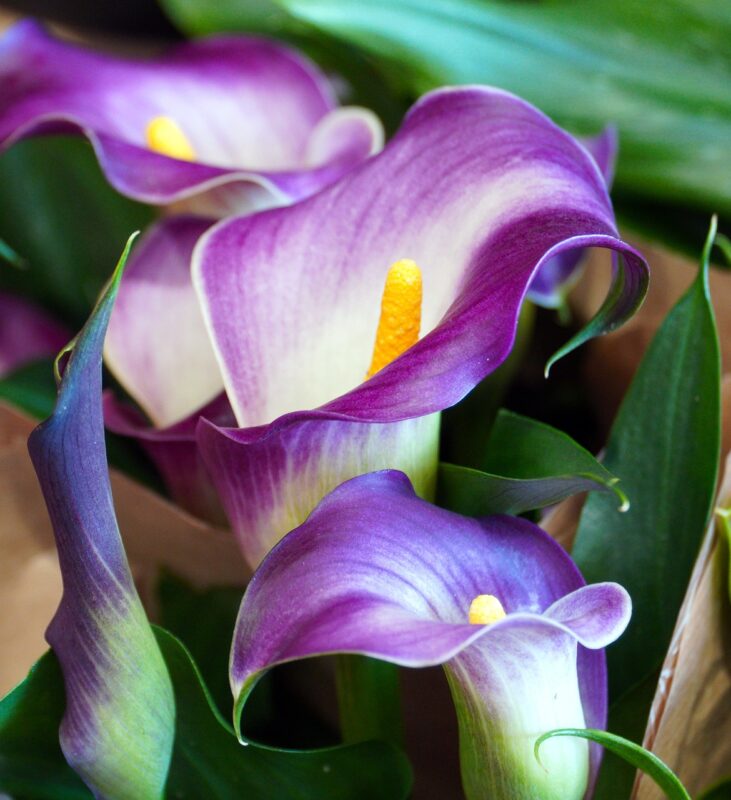
Elegance defines the Calla lily, scientifically known as Zantedeschia. Its sleek, trumpet-shaped flowers come in a dazzling array of colors, including classic white, soft yellows, and striking burgundy. Calla lilies thrive in moist, well-drained soils and can adapt to both sunny and partially shaded environments, allowing for flexibility in placement. These flowers bloom from late spring and continue into summer, creating a dramatic visual alongside other annuals and perennials. Their symbolic meanings of purity and beauty can evoke strong emotions, adding a deeper layer to any garden setting.
Canna Lily

For those seeking a tropical vibe, Canna lilies offer bold, exotic choices. Characterized by their large, vibrant blooms and striking foliage, these bulbs produce eye-catching flowers in intense reds, yellows, and oranges. Cannas typically bloom mid to late summer, perfect for creating a lush, green background or as focal points in borders. Their eye-catching seed pods develop after flowering, adding extra interest to the garden design throughout the seasons. Canna lilies thrive in sunny garden locations, which enhances their ability to thrive and produce an enduring visual impact.
Crinum

Crinum lilies stand out with their dramatic presence. Known for their large, fragrant trumpet-shaped flowers, Crinum bulbs bring a unique flair to summer gardens. Varieties can feature vivid blooms in colors from white to pink and red, commonly emerging from mid-summer through early fall. Unlike many other summer bulbs, Crinum lilies are remarkably resilient, thriving in moist, well-drained soil and adapting well to fluctuating conditions. Their lush, strap-like leaves provide a harmonious green backdrop for their impressive flowers, making for a gorgeous seasonal display that effortlessly attracts attention.
Dahlia

Renowned for their stunning diversity, dahlias capture the heart of many gardeners with their wide range of colors, forms, and sizes. These summer bulbs produce captivating flowers that can be pom-pom shaped, spiky, or even dinner plate-sized, all blooming from mid-summer until the first frost. Beyond their striking appearance, dahlias also attract various beneficial garden creatures such as butterflies and bees, enhancing the ecological landscape. Whether planted in structured flower beds, informal cutting gardens, or mixed borders, dahlias provide an impressive display, celebrating the essence of summer gardening.
Eucomis
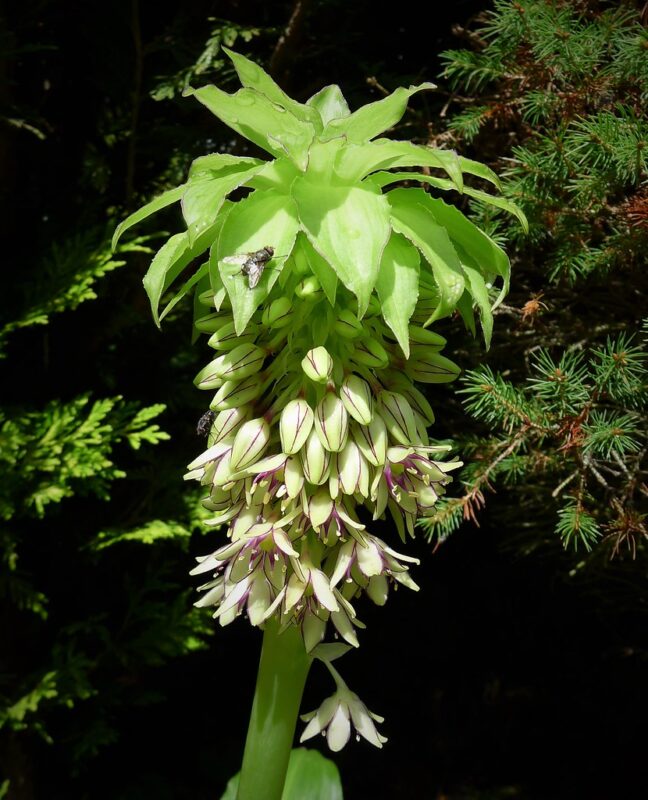
Eucomis, commonly known as pineapple lilies, stands out with its unique appearances resembling the tops of pineapples. The flower spikes are adorned with small star-shaped blooms in shades ranging from green to deep purple. They thrive in full to partial sun and well-drained soil, making them a charismatic addition to any garden. Their distinctive architectural form adds depth, texture, and interest to borders while also serving as stunning components in floral arrangements, infusing gardens with an exotic charm that delights visitors.
Gladiolus

A quintessential summer bulb, gladioli are celebrated for their striking vertical spikes adorned with blossoms in a plethora of colors. From deep crimson to delicate pastels, these stunning blooms rise tall, reaching heights of up to 4 feet and commonly blooming mid-summer. Gladiolus thrives best in full sun and well-drained soils, making them ideal for creating dramatic focal points in gardens or as cut flowers for arrangements. Furthermore, their corms can be carefully lifted and stored through winter, allowing dedicated gardeners to enjoy their beauty year after year.
Nerine
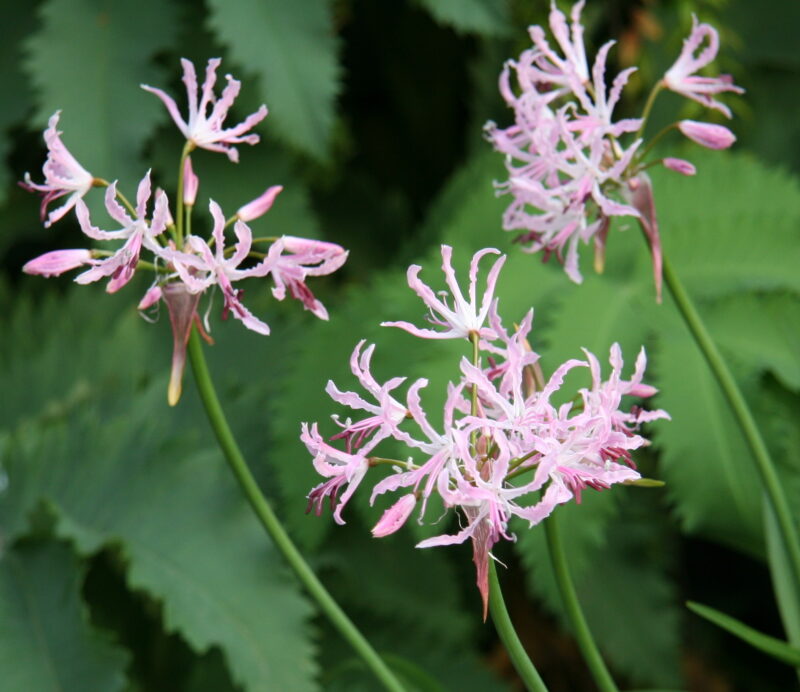
Nerine, often known as the Guernsey lily, is a captivating bulb flower characterized by its long-lasting, vivid blooms that shine in warm shades of pink, red, and white. These bulbs do well under full sun in well-drained soil and bloom in late summer to early fall, providing a secondary flush of color when many other summer favorites may fade. The narrow, strap-like foliage provides continuity and complementarity to the stunning floral spikes, both in the garden and in bouquet arrangements.
Ranunculus

Radiating romantic charm, ranunculus bulbs are true gems in any garden. These lush, multi-petaled blooms come in a stunning array of colors, adding brightness to any outdoor nook. Ranunculus flourishes best in sunny areas with well-drained soil, providing blooms that span from late spring well into summer. Their beautiful flowers are perfect for cutting, making them favorites amongst floral arrangers. What makes ranunculus special is their ability to thrive in summer heat, continuing to impress with their intricate beauty throughout the season.
Asiatic Lily (Lilium hybrids)

As a summer staple, Asiatic lilies are cherished for their striking visual displays and ease of growth. These hybrids bloom in early to mid-summer, providing cheerful bursts of color, from vibrant yellows to rich pinks. Thriving in full sun with well-drained soil, Asiatic lilies are versatile and can be planted in groups for a bold effect or spaced out for more subtle displays. The upward-facing, trumpet-shaped blooms are not only a feast for the eyes but also serve to attract beneficial insects like bees and butterflies, enhancing the ecological contributions of your garden.
Crocosmia (Crocosmia cultivars and hybrids)

Crocosmia is renowned for its radiant color offerings that can light up any summer garden. The arching stems adorned with vibrant, tubular flowers in shades of red, orange, and yellow bloom mid-summer and attract hummingbirds and butterflies, enhancing the garden’s ecological value. Preferring full sun with well-drained soil, Crocosmia thrives in numerous garden settings. Their elegant flower spikes make them perfect candidates for mixed borders or as standalone focal points, while their ability to naturalize means they reward gardeners with perpetual color that doesn’t require much upkeep.
Gloriosa Lily (Gloriosa superba)

A true garden showstopper, the gloriosa lily enchants all with its unique flame-like flowers. These climbing bulbs showcase striking blooms in vibrant reds, yellows, and soft oranges, complementing lush green foliage beautifully. Thriving in warm, sunny conditions and well-draining soils, gloriosa lilies require support, making them ideal for trellises or fences. Their lush leaves magnify the dramatic blooms, creating an unforgettable impact in any garden. By introducing gloriosa lilies, gardeners can cultivate an exotic atmosphere that draws admiration and attention.
Mexican Shell Flower (Tigridia pavonia)

Lastly, the Mexican shell flower or Tigridia pavonia deserves to be highlighted for its extraordinary visual appeal. Known for its unique blooms that resemble colorful shells, Tigridia produces flowers in vibrant reds, yellows, oranges, and whites that convey a sense of wild beauty. Thriving in sunny, warm locations with well-drained soil, these remarkable bulbs flourish from mid-summer to early fall, amplifying the summer bloom spectrum. With their natural allure drawing in hummingbirds and butterflies, Tigridia adds liveliness to the garden experience while embodying striking, unique beauty.
Tall Verbena (Verbena bonariensis)

Tall Verbena is a striking perennial that reaches heights of 3 to 5 feet. Its delicate purple flowers bloom from mid-summer to early fall, creating a stunning display that attracts butterflies and other pollinators. This plant thrives in full sun and well-drained soil, making it an ideal choice for borders and meadows. Its airy presence and tendency to sway in the breeze lend a whimsical touch to any garden setting.
Anise Hyssop (Agastache foeniculum)

Anise Hyssop boasts aromatic leaves and lovely spikes of lavender-blue flowers that bloom from mid-summer to fall. This hardy perennial attracts bees, hummingbirds, and other beneficial insects, creating a lively wildlife-friendly garden. The leaves can also be used to make fragrant teas, providing both ornamental and functional benefits. Anise Hyssop thrives in well-drained soil and tolerates drought conditions, making it a low-maintenance addition.
Coneflower (Echinacea)

Coneflowers are beloved summer perennials known for their daisy-like appearance and resilience. These hardy flowers bloom in various colors, including purple, pink, and white, from early summer to early fall. Not only do they add visual interest to the garden, but they also provide a critical source of nectar for bees and butterflies. Coneflowers thrive in full sun and can tolerate poor soil conditions, making them particularly easy to grow.
Black-Eyed Susan (Rudbeckia hirta)

Black-Eyed Susans are iconic summer bloomers with bright yellow petals and dark brown centers. Blooming from late spring through fall, these cheerful flowers thrive in full sun and attract numerous pollinators. They are drought-resistant and grow well in a wide range of soil types, making them versatile in garden design. Their bold, sunny blooms can create a striking visual effect when planted in large drifts.
Hardy Geraniums (Cranesbill)

Hardy geraniums are versatile garden staples celebrated for their prolonged blooming periods, typically from late spring through summer. These perennials exhibit delicate flowers in shades of blue, purple, and pink, adding softer hues to garden designs. They thrive in various soil types and are often used as ground covers, effectively suppressing weeds. Hardy geraniums are low-maintenance and can tolerate partial shade, making them suitable for more diverse planting areas.
Balloon Flower (Platycodon grandiflorus)

The Balloon Flower is named for its unique flower buds that resemble small balloons before they open. This perennial blooms from mid-summer to early fall, showcasing large, star-shaped flowers in blue, white, or pink. Balloon Flowers thrive in well-drained soil and prefer sun to partial shade. Their charming appearance and sturdy stems make them great cut flowers and perfect for adding vertical interest to perennial gardens.
Bee Balm (Monarda)

Bee Balm, also known as Monarda, bursts forth with colorful blooms in shades of red, pink, purple, and white from mid-summer through fall. This perennial is particularly favored by bees, butterflies, and hummingbirds, contributing significantly to local ecosystems. Bee Balm thrives in rich, moist soils with ample sunlight and can spread easily, making it an ideal candidate for naturalized areas or pollinator gardens.
Chinese Astilbe (Astilbe chinensis)
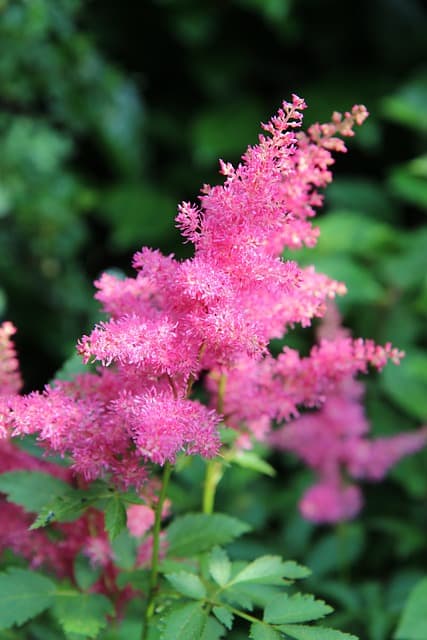
Chinese Astilbe is a stunning perennial known for its feathery plumes of flowers that bloom from early summer into late summer. Rising delicately above deep green foliage, the flowers can range from white to pink to deep red. Astilbe thrives in moist, shaded areas, making it ideal for woodland gardens or near water features. Its unique texture and layered appearance add depth and interest to any landscape.
Great Blanket Flower (Gaillardia aristata)

The Great Blanket Flower features vibrant red and yellow blossoms that bloom all summer long, making it a colorful addition to any perennial garden. This sun-loving plant is drought-resistant and thrives in poor soil, which makes it a practical option for low-maintenance landscapes. Attracting butterflies and other pollinators, Gaillardia adds charm to sunny borders and flower beds.
Tickseed (Coreopsis)
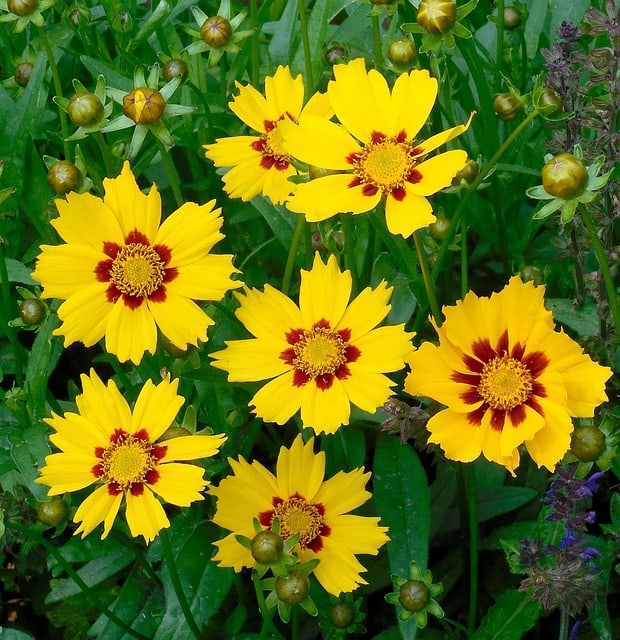
Tickseed is another summer perennial that is prized for its cheerful, daisy-like flowers, which bloom in vibrant yellow, pink, or red hues. The blooms can last from early summer to late fall, providing prolonged visual interest. These plants thrive in full sun and well-drained soils, thriving in less fertile conditions. Tickseed is also drought-tolerant, making them suitable for xeriscaping and low-water gardens.
Shasta Daisy (Leucanthemum × superbum)

Shasta Daisy is a classic garden flower known for its bright white petals and sunny yellow centers. They bloom throughout the summer, creating vibrant patches that draw in butterflies and other pollinators. These perennials thrive in full sun and are known for their robust growth, often reaching heights of 2 to 3 feet. Shasta Daisies are excellent for cut flowers and can be used to create informal or cottage-style gardens.
Pincushion Flower (Scabiosa)

The Pincushion Flower captivates gardeners with its unique, pincushion-like blooms that exhibit shades of blue, purple, or white. Blooming from early summer to fall, this perennial attracts butterflies, making it a favorite in pollinator gardens. Pincushion Flowers thrive in well-drained soil and full sun, and their low-growing nature makes them excellent for use in rock gardens or along garden edges.
Prairie Spiderwort (Tradescantia occidentalis)
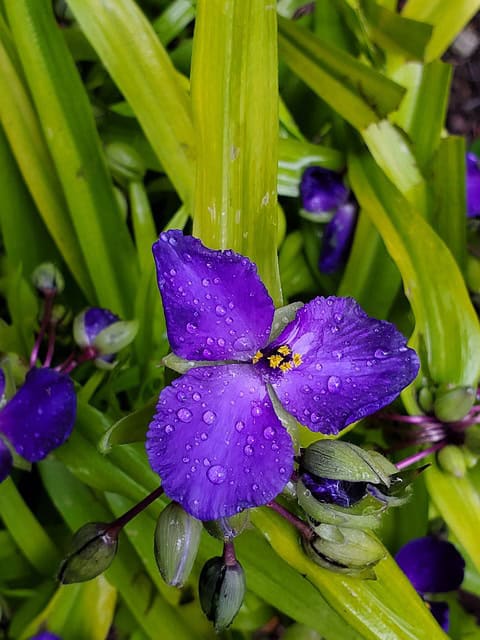
Prairie Spiderwort bursts forth with a captivating display of three-petaled blue flowers that bloom in clusters throughout the summer. Known for its ease of care, this perennial thrives in various soil types and tolerates both sun and partial shade. With its long, grass-like foliage, Prairie Spiderwort adds a unique textural element to gardens while requiring minimal maintenance and bringing a wildflower sense to landscapes.
Creeping Phlox (Phlox stolonifera)

Creeping Phlox is a flowering ground cover that creates a carpet of color in early summer and continues to bloom until late summer. Its vibrant blooms range from white to pink to purple and serve as a beautiful option for slopes or borders. This creeping perennial prefers well-drained soil and full sun, making it ideal for sunny areas. Creeping Phlox is also an excellent choice for containers and hanging baskets.
Perennial Delphinium (Delphinium)

Delphiniums are modern garden favorites due to their tall spikes adorned with colorful blossoms from mid-summer to fall. These dramatic plants thrive in full sun and well-drained soils, adding height and architectural interest to borders. They can be found in shades of blue, purple, pink, and white, attracting various pollinators. Regular deadheading encourages extended blooming, making them a high-impact choice for flower enthusiasts.
English Daisy (Bellis perennis)

English Daisies are charming perennial flowers that bloom from early spring and can sometimes continue into summer when conditions are ideal. Known for their classic white and yellow flower heads, they can add a cottage garden charm to any landscape. English Daisies thrive in well-drained soil and prefer full to partial sun, making them versatile for a variety of garden settings.
Red Valerian (Centranthus ruber)

Red Valerian adds a pop of color to the garden from late spring through summer with its clusters of bright pink or red flowers. This perennial is exceptionally tolerant of drought and poor soil, thriving in sunny, dry areas. Its ability to self-seed can result in charming volunteers in garden beds and pathways, making it a delightful choice for informal gardens.
Dianthus (Dianthus)

Dianthus varieties, known for their fragrant flowers and distinctive fringed petals, are perfect for summer gardens. They bloom for several months from late spring into summer, with options available in various colors. Hardy in a range of conditions, Dianthus thrives in full sun with well-drained soil. These delightful flowers are perfect for borders, rock gardens, or even cut flower arrangements.
Hardy Perennial Sage (Salvia)

Hardy Perennial Sage features stunning spikes of flowers in shades of purple, blue, and white that bloom throughout the summer. This drought-resistant plant thrives in full sun and well-drained soils, making it an attractive addition to borders and perennial gardens. Known to attract pollinators such as bees and butterflies, Sage’s long flowering period truly enhances summer gardens.
English Lavender (Lavandula angustifolia)

English Lavender is a must-have for any summer garden, celebrated for its enchanting fragrance and beautiful purple flower spikes that bloom from late spring into late summer. Known for its drought resistance, this Mediterranean plant thrives in well-drained, sandy soils under full sun. Beyond attracting pollinators such as bees, its blooms can be harvested for crafts and culinary uses, making it a multifunctional garden staple.
Everblooming Daylilies (Hemerocallis)

Everblooming Daylilies are resilient perennials known for their stunning trumpet-shaped flowers. With flowers appearing from early summer through fall, they come in a variety of colors and patterns. Daylilies prefer well-drained soil and full sun but can tolerate some shade. Their ability to thrive with minimal care and their wildlife-friendly blooms make them a favorite among gardeners.
Fairy Fan Flower (Scaevola aemula)

The Fairy Fan Flower offers colorful blooms all summer long, making it a stunning addition to gardens and containers. With flower hues ranging from purple to blue and white, this perennial thrives in full sun and well-drained soil. Its trailing growth makes it perfect for hanging baskets or borders, and it is particularly attractive to butterflies.
Japanese Anemone (Anemone hybrida)
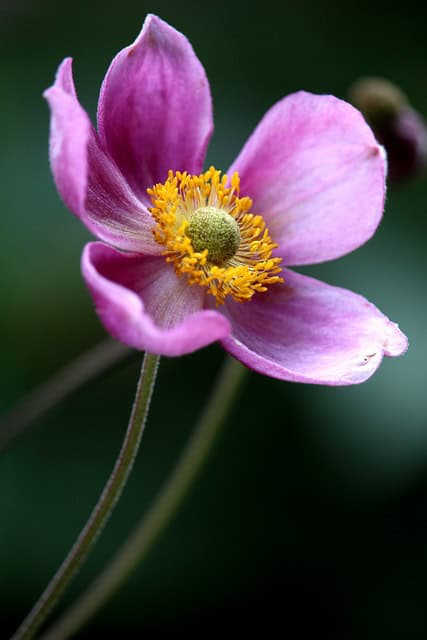
Japanese Anemones produce charming white or pink flowers that bloom from late summer into fall, providing continuity in the garden after most blooms have faded. This perennial prefers partial shade and moist, well-drained soils, making it perfect for more shaded areas. Their graceful flowers sway in the breeze, adding an element of softness and elegance to any garden.
Butterfly Milkweed (Asclepias tuberosa)
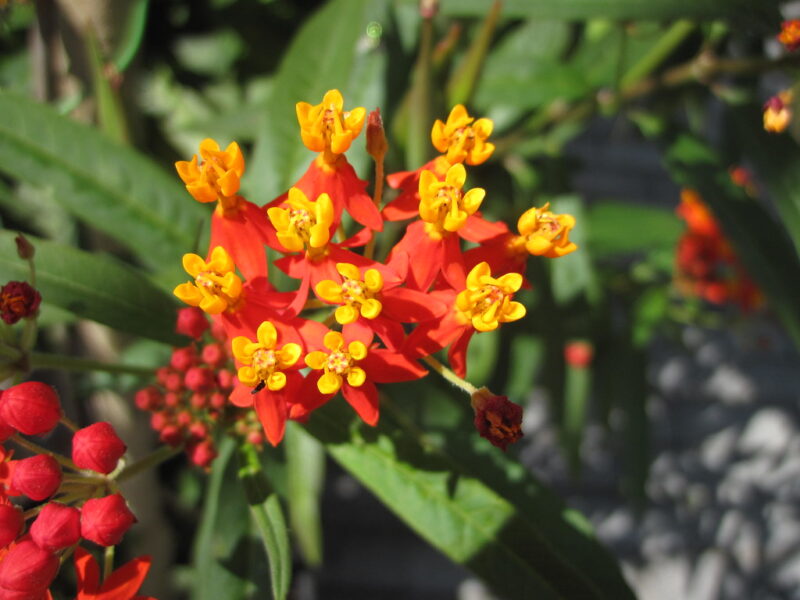
Butterfly Milkweed is a native perennial renowned for its clusters of bright orange or yellow flowers that bloom throughout the summer. These blooms are a vital nectar source for butterflies and other pollinators, essential for creating wildlife-friendly gardens. Butterfly Milkweed prefers well-drained soil and full sun, making it an excellent option for naturalized or prairie-style gardens.





